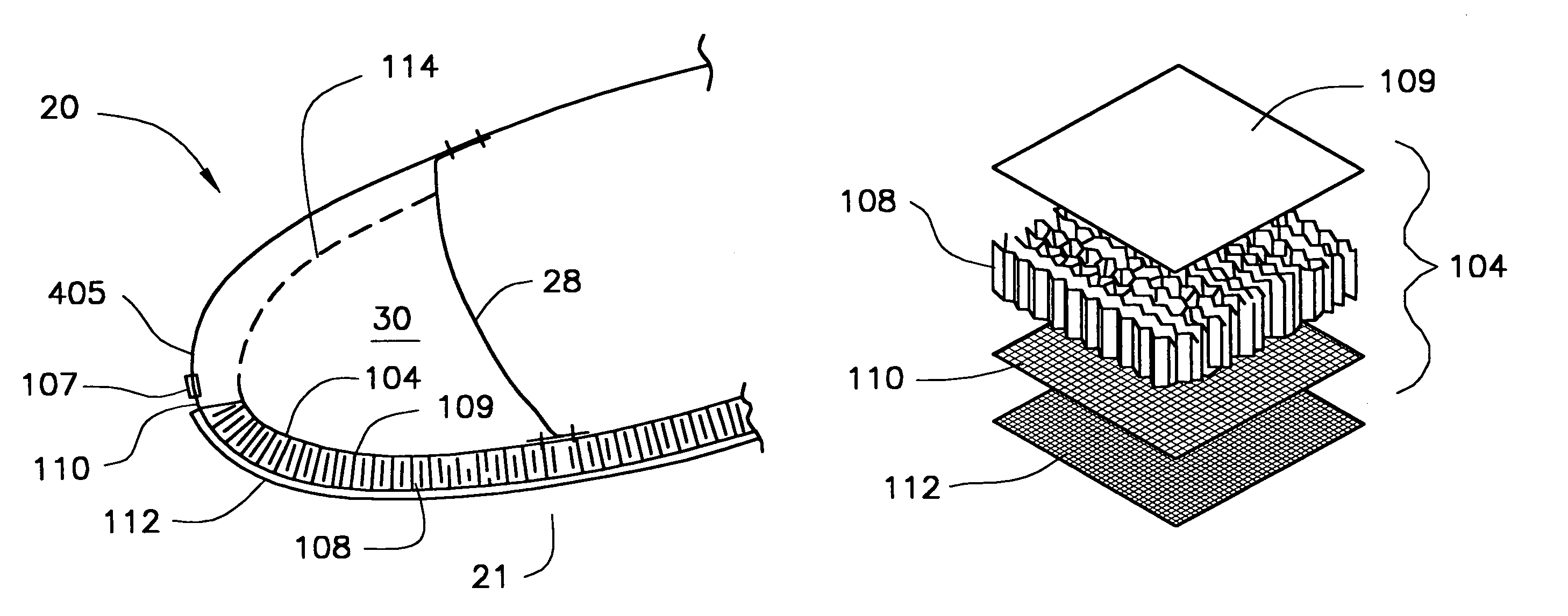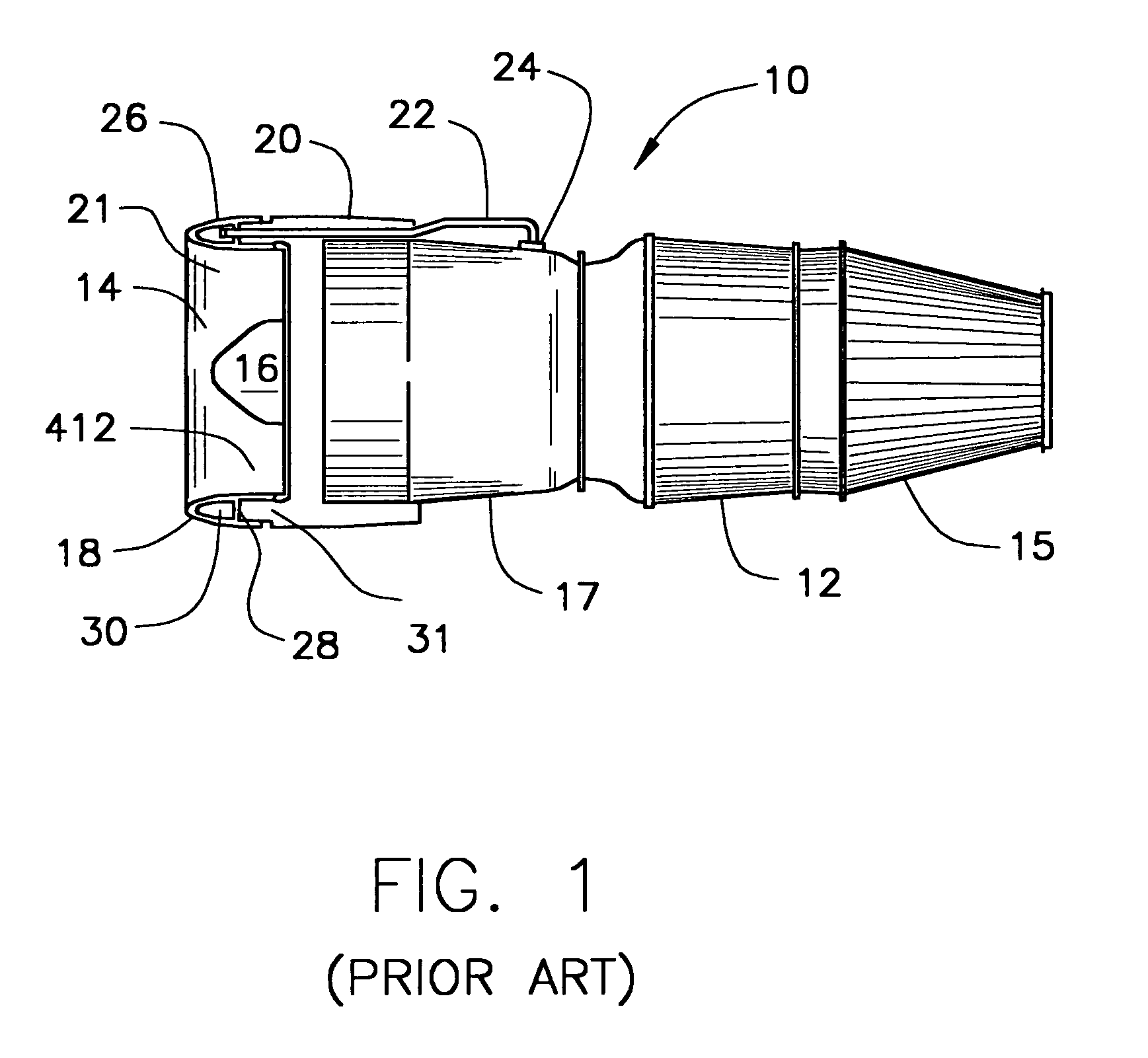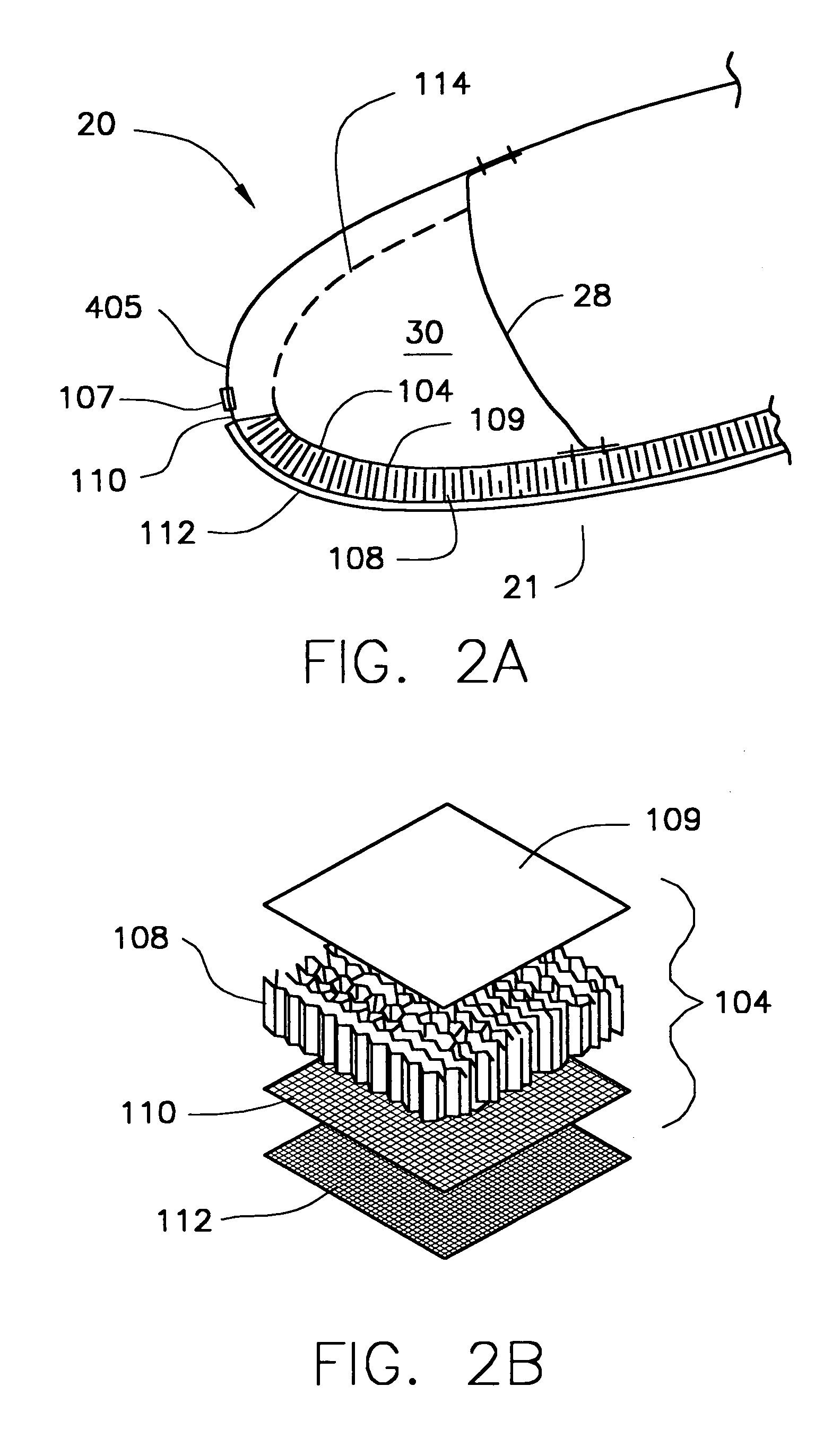Method and apparatus for noise abatement and ice protection of an aircraft engine nacelle inlet lip
a technology of ice protection and aircraft engine, which is applied in the direction of de-icing equipment, fuselage insulation, aircraft power plants, etc., can solve the problems of engine malfunction, loss of performance, and varying amounts of objectionable audible noise of aircraft airframe and engine during departure and approach conditions, so as to avoid temperature concerns, weight and cost penalties, the effect of improving ice protection and acoustic performance characteristics
- Summary
- Abstract
- Description
- Claims
- Application Information
AI Technical Summary
Benefits of technology
Problems solved by technology
Method used
Image
Examples
Embodiment Construction
[0026]This invention will be further understood in view of the following detailed description.
[0027]Referring now to FIG. 1, which is also set forth in U.S. Pat. No. RE 36,215, there is seen a schematic representation of a high-speed jet engine 10 of the sort suitable for aircraft propulsion. Air enters through inlet section 14, between nose cap 16 and the annular housing 18, which constitutes the forwardmost section of the engine nacelle 20, which includes nacelle inlet lip 21. Hot, high-pressure propulsion gases pass through exhaust assembly 15 and out the rear of the engine.
[0028]In flight, under certain temperature and humidity conditions, ice may form on the nacelle inlet lip 21, which is the leading edge of annular housing 18, and on the nose cap 16. The ice changes the geometry of the inlet area between annular housing 18 and nose cap 16, adversely affecting the quantity and flow path of incoming air. Also, pieces of ice may periodically break free from these components and e...
PUM
 Login to View More
Login to View More Abstract
Description
Claims
Application Information
 Login to View More
Login to View More - R&D
- Intellectual Property
- Life Sciences
- Materials
- Tech Scout
- Unparalleled Data Quality
- Higher Quality Content
- 60% Fewer Hallucinations
Browse by: Latest US Patents, China's latest patents, Technical Efficacy Thesaurus, Application Domain, Technology Topic, Popular Technical Reports.
© 2025 PatSnap. All rights reserved.Legal|Privacy policy|Modern Slavery Act Transparency Statement|Sitemap|About US| Contact US: help@patsnap.com



